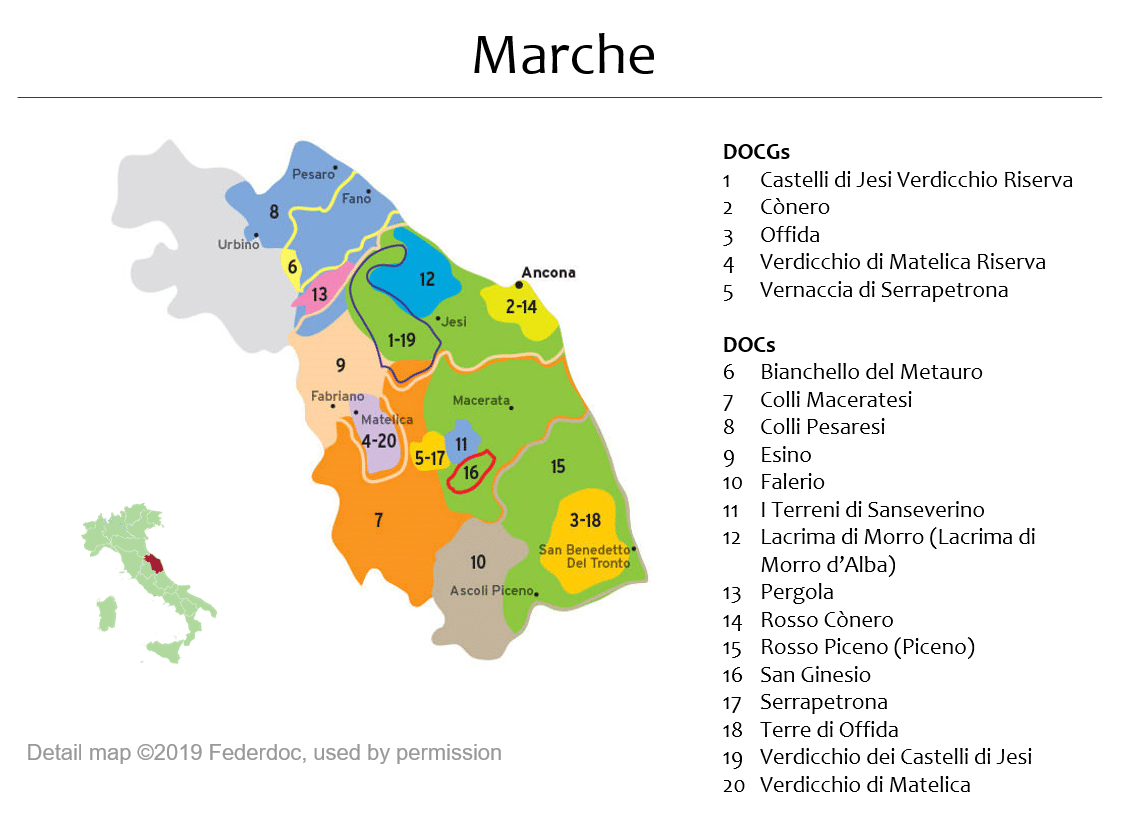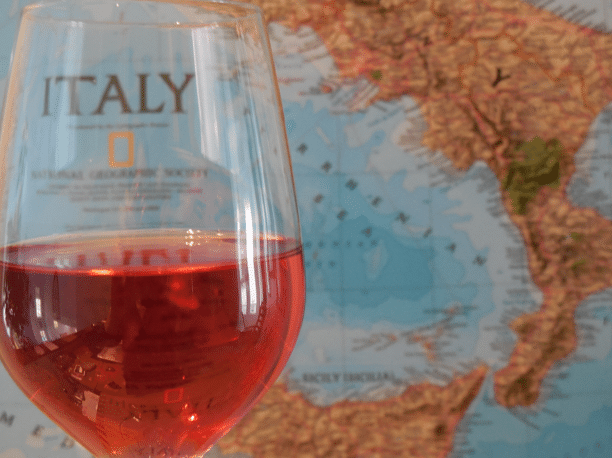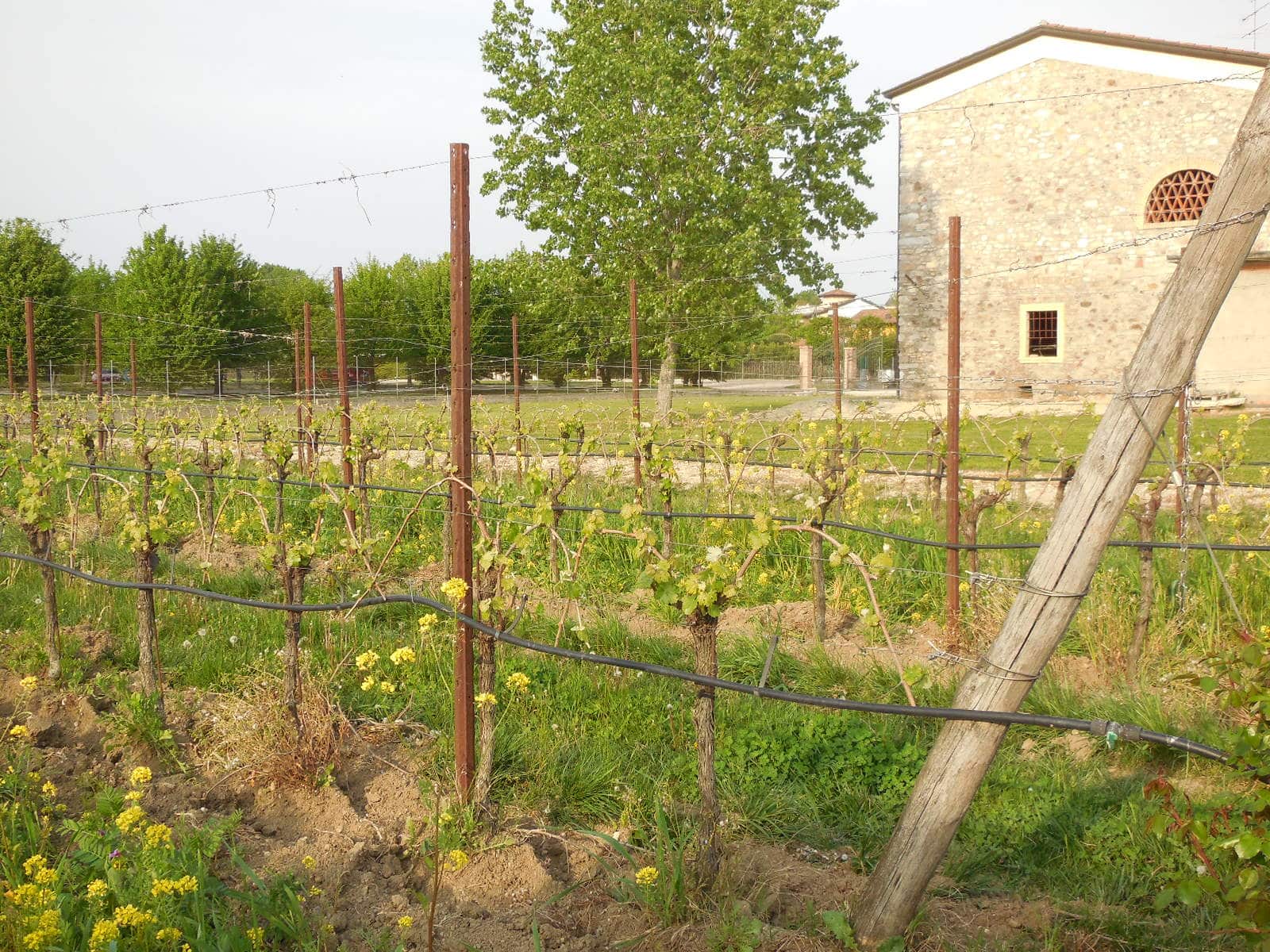A spotlight on the Italian region of Marche, best known for white wines made from Verdicchio, but also red wines from Sangiovese or Montepulciano and culinary specialties like olive ascolane
Search
Menu

A spotlight on the Italian region of Marche, best known for white wines made from Verdicchio, but also red wines from Sangiovese or Montepulciano and culinary specialties like olive ascolane

Le Marche (The Marches) is located on the Adriatic coast toward the top of the Italian peninsula. Its capital and largest city is Ancona. In the wine world, Marche is best known for white wines made from Verdicchio and perhaps for Montepulciano-based red wines like Rosso Cònero and Rosso Piceno. It has 5 DOCGs, 15 […]
One of Italy’s greatest white varieties. Trebbiano di Lugana and Trebbiano di Soave are biotypes. If those varieties are combined, the total vineyard area is 3,521 ha (8,700 acres) with 64% in Marche, 20% in Lombardia, and 18% in Veneto. High acidity; ageworthy. Aromas & flavors: Floral, delicately fruity, almond. Best DOPs: Castelli di Jesi […]

Looking for an interesting new rosato to try? Below is a list of the denominations in Italy that produce rosato (rosé) table wines (including still and frizzante wines, but not sparkling wines or dessert wines). The list is grouped initially by the dominant grape variety in the wine, if any, as required by DOP rules. […]
The ambassadors of Italian wine in the world: US by Geralyn Brostrom The picture of Italian wine in the US: a love still flourishing. Indigenous varieties and targeted communication the keys to keep growing. di Federico Gallo We interviewed Geralyn Brostrom, one of the 14 Italian Wine Experts in the world, the highest certification of the […]

Lugana DOC is a small denomination in both Lombardy and Veneto, producing only white wines from the high-quality Turbiana variety. This post provides an overview of Lugana.

Posted November 8, 2013 Trebbiano is the second most planted grape variety in Italy. Or is it? The answer depends on how liberal your definition of Trebbiano is, because there are several different subtypes of Trebbiano around Italy—and it appears that most of them are not really related. [Ed. note: Since this article was written, […]

Unità geografiche aggiuntive (UGAs) are geographical subdivisions within denominations that you may see on labels. Here is a summary of what UGAs were, are, and are not.